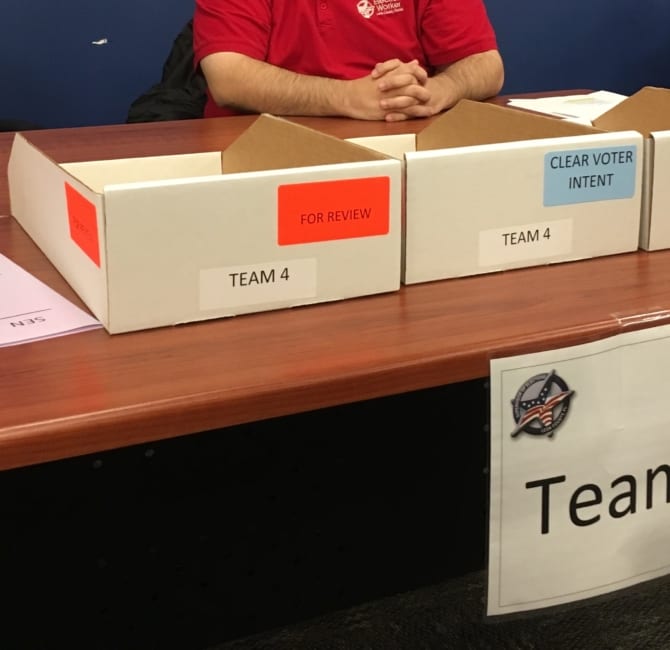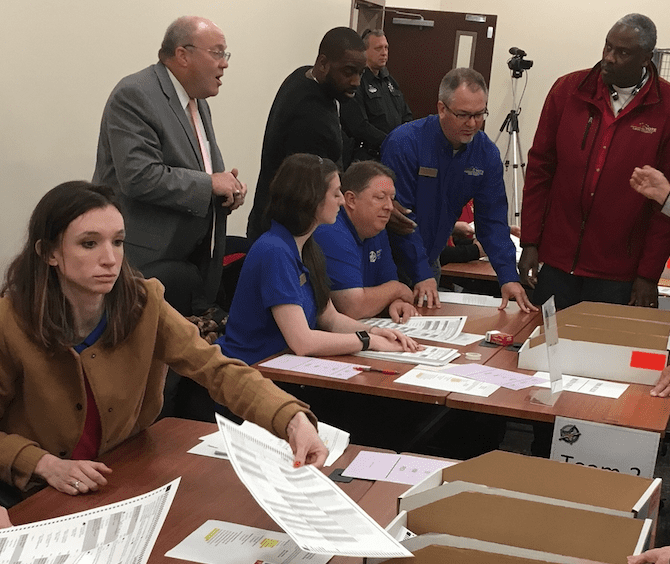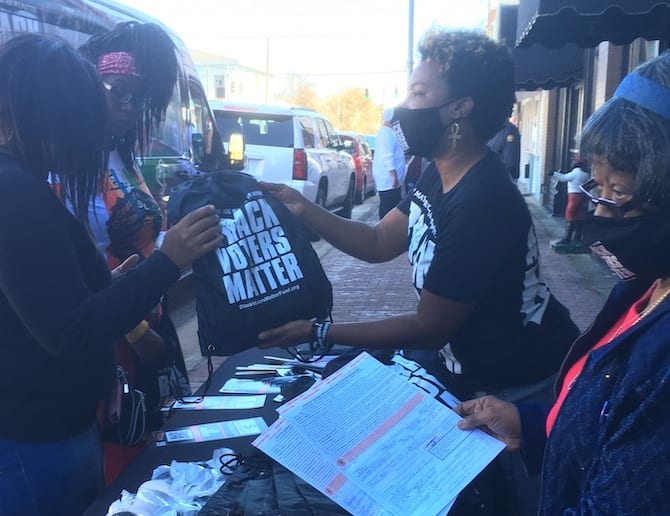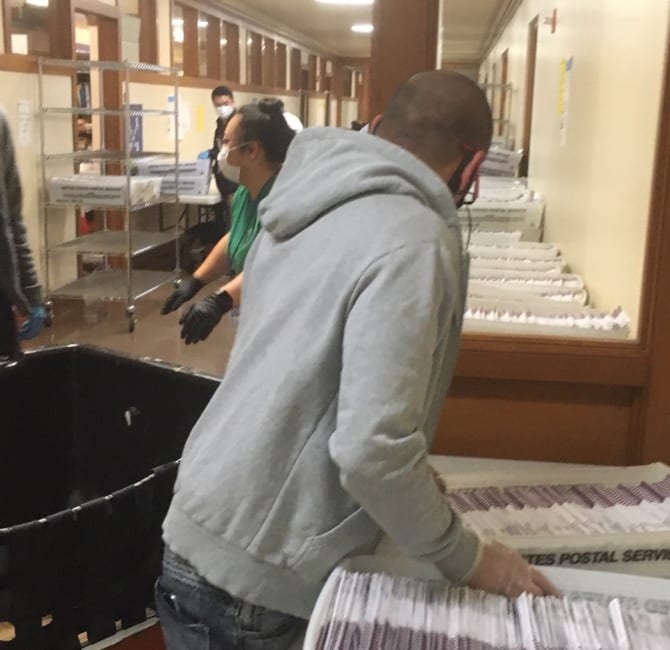Will Supreme Court Election Rulings be 2020’s October Surprise?
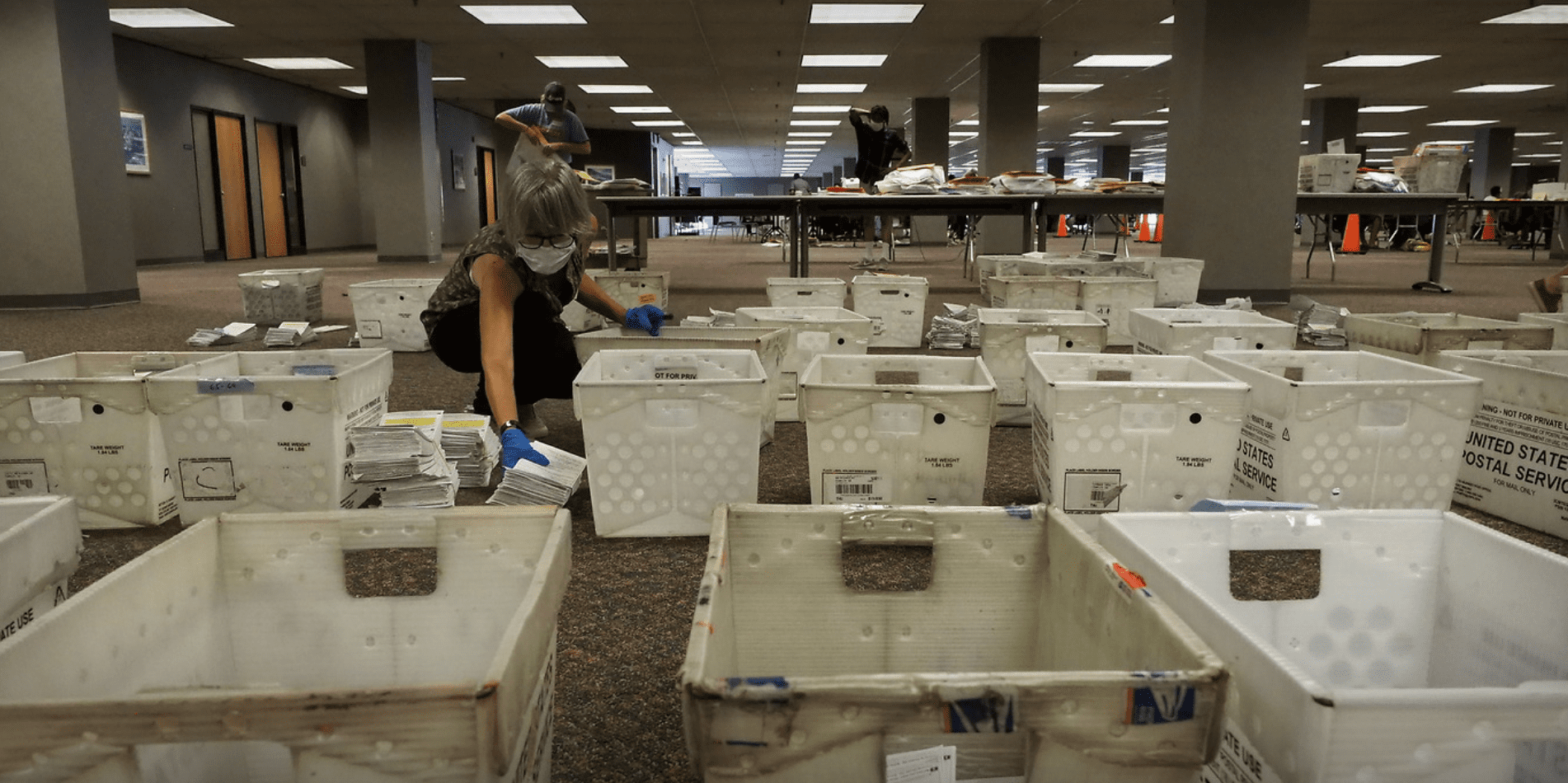
(Photo: Sue Dorfman /Zuma Press)
Late Monday as its newest justice was about to be sworn in, the Supreme Court issued the first of what may be more rulings in coming days that underscore the court’s conservative majority has a marked hostility to voting rights.
Seen narrowly, the Court’s conservatives ruled that Wisconsin could not extend a deadline to accept absentee ballots that had been postmarked by Election Day but arrived six days later, and banned anyone from being a poll worker who was not a resident of the same county. (A lower court had granted these responses, but they were put on hold pending appeals.)
In concrete terms, the Wisconsin ruling could cut into the lead held by Democratic candidates among absentee voters—as a Supreme Court-extended return deadline in April’s presidential primary allowed 80,000 additional ballots to be counted (7 percent of all absentee ballots). The decision also meant that some poll workers will not be able to work as anticipated. It may be hard to replace these workers, given the state’s resurgent coronavirus outbreak.
“The Democratic Party of Wisconsin will double down on making sure that every Wisconsin voter knows how to exercise their right to vote in the final eight days of this election,” Wisconsin Democratic Party Chairman Ben Wikler said in response in a statement.
The ruling is expected to be followed by Supreme Court decisions on GOP appeals of rulings that extended ballot return deadlines in North Carolina (now November 12). With a new justice, it may reconsider aspects of its recent 4-4- decision in Pennsylvania, where a three-day ballot extension remains in place, but larger issues loom that could empower state legislatures to ignore the election’s popular vote and appoint a presidential Electoral College slate.
In other words, hostility to voting rights by the Supreme Court’s expanded conservative bloc could become the quadrennial “October surprise,” upending the election, much like former FBI Director James Comey’s announcement in October 2016 that the FBI was reopening an investigation into Hillary Clinton’s government emails roiled the close of that race.
The voting cases before the Court have yielded decisions but not many detailed explanations. But the Wisconsin ruling was accompanied by concurring and dissenting opinions—split along liberal and conservative lines. Scholars on law blogs said these views were formulated during deliberations over many voting rights and election procedure cases this fall.
From a legal standpoint, the high court conservatives said that lower federal courts had no justification to assist Wisconsin voters because that responsibility squarely rests with its state legislature. The fact that the Republican-majority legislatures opted to not act on voters’ behalf in response to COVID was irrelevant, the court’s conservatives said.
“One may disagree with a State’s policy choice to require that absentee ballots be received by Election Day. Indeed, some States require only that absentee ballots be mailed by Election day,” wrote Justice Brett Kavanaugh. “But the States requiring that absentee ballots be received by election day do so for weighty reasons that warrant judicial respect. Federal courts have no business disregarding those state interests simply because the federal courts believe that later deadlines would be better.”
Wisconsin’s legislature is not unique among battleground states. The purple states where legislatures did not take steps to make voting easier in response to COVID-19 were the same states where Republicans have held legislative majorities for the past decade, a consequence of partisan gerrymanders. These states, where much of 2020’s voting rights suits have unfolded, include Wisconsin, Michigan, Pennsylvania, Ohio, North Carolina, Texas and Florida.
The view of the Court’s liberals, as expressed in a dissent by Justice Elena Kagan, said federal courts had a responsibility to assist voters exercise their rights.
“The Court’s decision will disenfranchise large numbers of responsible voters in the midst of hazardous pandemic conditions,” she wrote. “Because the Court refuses to reinstate the district court’s in-junction [extending the ballot return deadline], Wisconsin will throw out thousands of timely re-quested and timely cast mail ballots. And today’s decision does not stand alone. In other recent cases as well, the Court has halted injunctions necessary for people [in Alabama] to cast ballots safely.”
But Kavanaugh said that Wisconsin voters had other options, including Election Day registration and voting, and that state election officials have been urging the public to make plans to vote for months. Thus, Kavanaugh said that extending a ballot-return deadline that had been suspended by an appeals court was disruptive at the last minute. Kagan, however, countered that giving voters and local election officials more time helped the process and legitimized the election outcome.
“Last-minute changes to election processes may baffle and discourage voters; and when that is likely, a court has strong reason to stay its hand,” Kagan said. “But not every such change poses that danger. And a court must also take account of other matters—among them, the presence of extraordinary circumstances (like a pandemic), the clarity of a constitutional injury, and the extent of voter disenfranchisement threatened.”
Stepping back from the particulars of the Wisconsin case, the worrisome undercurrent is that the Supreme Court is elevating the authority of legislatures to set the rules for elections. That power extends to authority under the federal Constitution to disregard the popular vote and appoint a slate of presidential electors favoring the legislative majority’s party.
“Barton Gellman recently explored this risk in the Atlantic, citing a law review article I wrote last year,” wrote Edward B. Foley, a constitutional scholar who leads Ohio State University’s election law program. “But where my analysis of the issue was hypothetical, Gellman quotes key GOP figures in Pennsylvania acknowledging on the record that this option is under consideration. Last week, the Pennsylvania legislature began forming an investigatory committee, seen as the first step toward implementing such action.”
Whether the Supreme Court’s enlarged conservative bloc is heading down a path that will merge with the scenario presented by Foley and affirmed by Gellman is an open question. But the reasoning behind the court’s Wisconsin ruling appears to be a step in that direction.



